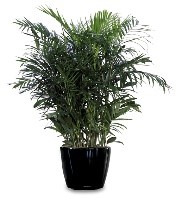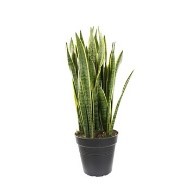Blog Categories:
Blog | How to Improve Your Indoor Air Quality with Plants

The Research
In the late 80’s NASA researched certain plants that aide in improving indoor air quality. The reason for this research was to help with improving the health of citizens in newly designed office buildings, as well as reducing levels of air pollutants for future space inhabitants. The study of these plants was conducted over a 2-year period. Since then, other research has been performed by universities to further aide with the indoor pollution problem.
The Facts
With people spending 90% of their time indoors, it is a vital to consider indoor air pollution. Research has found, that certain plants have a natural filtration system. The process includes the leaves, roots, and soil. Through this filtration process some plants can remove trichloroethylene, formaldehyde, benzene, xylene, and ammonia from the air in your home or office.
The Plants
Spider Plant (Chlorophytum comosum)
Research has found the Spider plant can help reduce formaldehyde and xylene from the air. This plant does well either hanging or in the sitting pot. This plant is also non-toxic to cats and dogs. The Spider Plant is considered easy to care for, and fast growing. These plants also look lovely in an office.
Chinese Evergreen (Aglaonema modestum)
Chinese evergreens to help reduce formaldehyde and benzene from indoor spaces. This plant does well in a sitting pot. The Chinese Evergreen is also easy to care for. This plant is toxic to cats and dogs.
Bamboo Palm (Chamaedorea seifrizii)
The Bamboo palm can help to reduce formaldehyde and xylene. This plant is very common for large office spaces and waiting areas. Bamboo palm is non-toxic to cats and dogs. The care for this plant is simple.
Devil’s Ivy aka Golden Pothos (Epipiremnum aureum)
Devil’s ivy is a very hardy plant. Making it the perfect plant for any small space or those who don’t have a green thumb. This plant helps reduce formaldehyde, benzene, and xylene from the home or work space. This plant is also very fast growing. Devil’s ivy is toxic to cats and dogs.
Barberton Daisy (Gerbera jamesonii)
Barberton daisy, also commonly known as a Gerber daisy, is a very colorful addition to any home or office. This plant helps remove trichloroethylene, formaldehyde, and xylene from the air. Barberton daisy requires a moist soil but is still easy to care for. This plant is non-toxic to cats and dogs.
Cornstalk Dracaena (Draceaena fragrans ‘Massangeana’)
Cornstalk dracaena can grow tall if it is not trimmed. This plant is perfect for any home or large office area. The Cornstalk dracaena can help reduce trichloroethylene, formaldehyde, and benzene from your home or office. This plant is toxic to cats and dogs.
English Ivy (Hedera helix)
The English ivy can reduce the levels of trichloroethene, formaldehyde, benzene, and xylene. This plant looks wonderful as a hanging plant in any indoor space. Don’t forget this plant is an ivy, so make sure to read about the care for it and the pruning. The English ivy is toxic to cats and dogs.
Snake Plant aka Mother-In-Law’s Tongue (Sansevieria trifasciata ‘Laurentii’)
The Snake plant, also called the Mother-in-law’s tongue, is a beautiful addition to any home or office. This plant can help reduce the levels of trichloroethene, formaldehyde, benzene, and xylene. The Snake plant is toxic to cats and dogs. Make sure you read about the care for this plant before you decide to get it.
Red-Edged Dracaena (Dracaena marginata)
The Red-Edged dracaena is a lovely red and green foliage plant. This plant will add a wonderful pop of color to any home or office. The Red-Edged dracaena helps reduce the levels of trichloroethene, formaldehyde, benzene, and xylene. This plant is toxic to cats and dogs.
Peace Lily (Spathiphyllum ‘Mauna Loa’)
Peace lilies are commonly seen at funerals but are a gorgeous addition for color and bloom to any home or office. This plant is toxic to cats and dogs. The Peace lily helps reduce the levels of trichloroethene, formaldehyde, benzene, xylene, and ammonia found in the home or office.
Florist’s Chrysanthemum (Chrysanthemum morifolium)
The Chrysanthemum is a great flower blooming plant for any home or office. The Chrysanthemum helps reduce the levels of trichloroethene, formaldehyde, benzene, xylene, and ammonia found in the home or office. This plant is toxic to dogs and cats.
Advice
Make sure to research what plants fit your needs and growing abilities before you buy them. Each plant on this list requires a different kind of care. If you have animals, make sure you check to see that the plant that you want is safe and non-toxic for them. We want to keep your pets safe as well. We want to be your first choice for Wichita AC Repair and heat and air Wichita KS!











